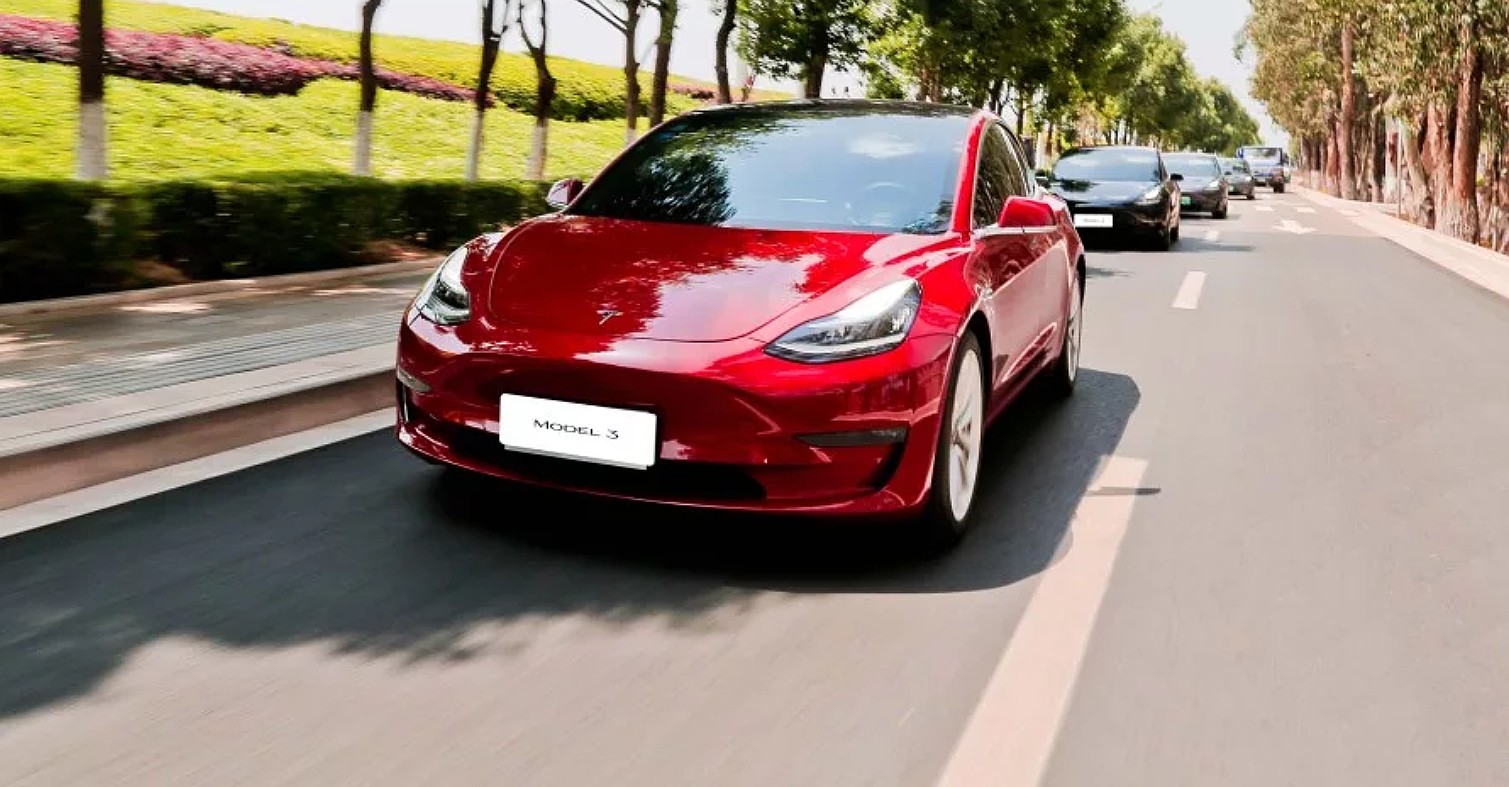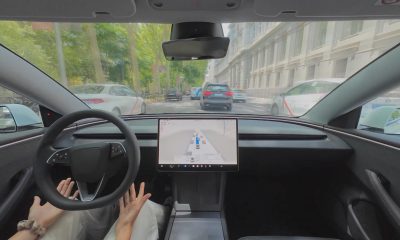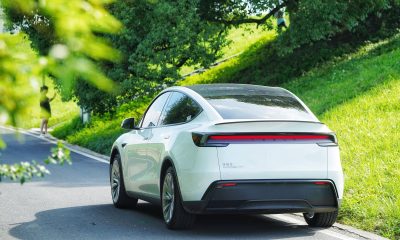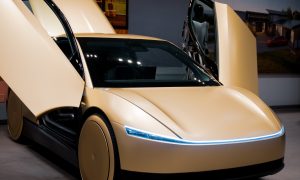

News
Tesla’s marketing strategies in China could address the negative narrative in the US
Over the course of the massive roller coaster ride that was Tesla’s first and second quarters this year, it has become particularly evident that the electric car maker is dealing with a lot of misinformation. After the first quarter’s lower-than-expected results, for example, Tesla faced multiple narratives suggesting that the demand for the company’s vehicles was fast declining, and that its growth story was dead. It was not until Tesla revealed its higher-than-expected delivery and production numbers in the second quarter that the narrative surrounding the company shifted a little bit for the better.
Being one of the most shorted companies in the market, Tesla is no stranger to misinformation campaigns. The company’s vehicles consistently rank high with safety agencies, yet the idea that the Model 3, S, and X are dangerous and catch fire all the time continues to persist. Tesla’s quarterly safety reports have consistently shown that fewer accidents happen when Autopilot is activated, but the driver-assist system is perceived as dangerous by a notable demographic of would-be car buyers nonetheless — and these are but the tip of the iceberg.
One of the most striking portions of Tesla’s 2019 Annual Shareholder Meeting last month involved a number of retail investors brainstorming solutions to address the alarming amount of misinformation surrounding the company. Responding to the concerned shareholders, Elon Musk admitted that he is at a little bit of a loss when it comes to battling the negativity surrounding Tesla, though he expressed his dislike for advertising campaigns that are deceptive to consumers. Nevertheless, considering that the Tesla Model 3 is now breaking into a market that is larger than it has ever dealt with before, it would be wise for the electric car maker to find a solid, subtle strategy that allows it to reach a wider audience, while shifting the narrative to a more positive direction in the process.

What is pretty remarkable is that Tesla does not need to look far to find a marketing strategy that works without being deceptive. Over in China, there is a company that has shown a notable degree of cleverness with its marketing efforts, utilizing creative campaigns that help improve the perception of the public to its brand. That company is Tesla.
Tesla has been around in China since 2014, when it started delivering the Model S to the region. For the most part, Tesla has competed much like a niche carmaker in the country, with the Model S and Model X being high-priced premium vehicles that are, in some way, considered as status symbols for the wealthy. This is changing with the arrival of the Model 3, as the electric sedan’s lower price opens up the Tesla ecosystem to a far broader demographic. The buildout of Gigafactory 3 in Shanghai, which will be producing locally-made Model 3 and Model Y, will make Tesla’s vehicles even more accessible to the mainstream market in the near future.
With Model 3 deliveries already underway and with Gigafactory 3’s buildout progressing faster than expected, it is pertinent for Tesla to ensure that the company is well marketed for Chinese consumers. This is where things get particularly interesting, since Tesla has been conducting a subtle, clever, and likely effective marketing campaign for the Chinese market as of late. Immediately noticeable is the care that the company has taken to respect the country’s culture and traditions, as shown in the tastefully-designed cards Tesla sent out during last month’s Dragon Boat Festival, and the reviewers that the electric car maker released for high school students in the days leading up to the national college examination. These were simple gestures, but they showed that Tesla is a company that is respectful and grounded.
Other marketing campaigns that have raised Tesla’s visibility in the Chinese market have been equally tasteful. Just recently, Tesla and QQ Music, a popular music streaming service in the country, held a series of “Music Parties” in key cities. These were hip events that were aimed at the younger demographic, many of whom are or will be looking to buy their first vehicle in the near future. The company has also launched a Tesla Performance Driving School, which involves the company hiring professional drivers to teach Model 3 owners how to get the most fun out of their vehicles. This program promotes the capabilities of the Model 3 Performance, while giving the impression that Tesla is a responsible company that encourages high-speed driving in safe, regulated environments.
Also notable were Tesla-organized road trips, which are extended journeys over scenic routes that are aimed at promoting the company’s vehicles and the convenience of the Supercharger Network. Online, Tesla’s active marketing strategies in China are quite impressive as well, as evidenced by the spread of tutorials featuring its vehicles and their features. These pages, one which could be accessed here, feature clear guidelines about Autopilot’s proper utilization, its features, its limitations, and the responsibilities of the driver while the system is in use.
When it comes to battling misinformation, the best strategy is always to provide the right information. To shift a subjectively negative narrative, it is best to foster an objectively positive narrative. Contrary to Elon Musk’s statements during the Annual Shareholder Meeting, it appears that Tesla already has a pretty good strategy that has the potential to address, at least to some degree, the misconceptions and misinformation surrounding the company in the United States. Granted, Tesla currently enjoys widespread support from the Chinese government, and the United States is a far more challenging market than China, but considering what’s at stake, these marketing efforts might very well be worth a try.
Elon Musk
Why Tesla’s Q3 could be one of its biggest quarters in history
Tesla could stand to benefit from the removal of the $7,500 EV tax credit at the end of Q3.

Tesla has gotten off to a slow start in 2025, as the first half of the year has not been one to remember from a delivery perspective.
However, Q3 could end up being one of the best the company has had in history, with the United States potentially being a major contributor to what might reverse a slow start to the year.
Earlier today, the United States’ House of Representatives officially passed President Trump’s “Big Beautiful Bill,” after it made its way through the Senate earlier this week. The bill will head to President Trump, as he looks to sign it before his July 4 deadline.
The Bill will effectively bring closure to the $7,500 EV tax credit, which will end on September 30, 2025. This means, over the next three months in the United States, those who are looking to buy an EV will have their last chance to take advantage of the credit. EVs will then be, for most people, $7,500 more expensive, in essence.
The tax credit is available to any single filer who makes under $150,000 per year, $225,000 a year to a head of household, and $300,000 to couples filing jointly.
Ending the tax credit was expected with the Trump administration, as his policies have leaned significantly toward reliance on fossil fuels, ending what he calls an “EV mandate.” He has used this phrase several times in disagreements with Tesla CEO Elon Musk.
Nevertheless, those who have been on the fence about buying a Tesla, or any EV, for that matter, will have some decisions to make in the next three months. While all companies will stand to benefit from this time crunch, Tesla could be the true winner because of its sheer volume.
If things are done correctly, meaning if Tesla can also offer incentives like 0% APR, special pricing on leasing or financing, or other advantages (like free Red, White, and Blue for a short period of time in celebration of Independence Day), it could see some real volume in sales this quarter.
You can now buy a Tesla in Red, White, and Blue for free until July 14 https://t.co/iAwhaRFOH0
— TESLARATI (@Teslarati) July 3, 2025
Tesla is just a shade under 721,000 deliveries for the year, so it’s on pace for roughly 1.4 million for 2025. This would be a decrease from the 1.8 million cars it delivered in each of the last two years. Traditionally, the second half of the year has produced Tesla’s strongest quarters. Its top three quarters in terms of deliveries are Q4 2024 with 495,570 vehicles, Q4 2023 with 484,507 vehicles, and Q3 2024 with 462,890 vehicles.
Elon Musk
Tesla Full Self-Driving testing continues European expansion: here’s where
Tesla has launched Full Self-Driving testing in a fifth European country ahead of its launch.

Tesla Full Self-Driving is being tested in several countries across Europe as the company prepares to launch its driver assistance suite on the continent.
The company is still working through the regulatory hurdles with the European Union. They are plentiful and difficult to navigate, but Tesla is still making progress as its testing of FSD continues to expand.
Today, it officially began testing in a new country, as more regions open their doors to Tesla. Many owners and potential customers in Europe are awaiting its launch.
On Thursday, Tesla officially confirmed that Full Self-Driving testing is underway in Spain, as the company shared an extensive video of a trip through the streets of Madrid:
Como pez en el agua …
FSD Supervised testing in Madrid, Spain
Pending regulatory approval pic.twitter.com/txTgoWseuA
— Tesla Europe & Middle East (@teslaeurope) July 3, 2025
The launch of Full Self-Driving testing in Spain marks the fifth country in which Tesla has started assessing the suite’s performance in the European market.
Across the past several months, Tesla has been expanding the scope of countries where Full Self-Driving is being tested. It has already made it to Italy, France, the Netherlands, and Germany previously.
Tesla has already filed applications to have Full Self-Driving (Supervised) launched across the European Union, but CEO Elon Musk has indicated that this particular step has been the delay in the official launch of the suite thus far.
In mid-June, Musk revealed the frustrations Tesla has felt during its efforts to launch its Full Self-Driving (Supervised) suite in Europe, stating that the holdup can be attributed to authorities in various countries, as well as the EU as a whole:
Tesla Full Self-Driving’s European launch frustrations revealed by Elon Musk
“Waiting for Dutch authorities and then the EU to approve. Very frustrating and hurts the safety of people in Europe, as driving with advanced Autopilot on results in four times fewer injuries! Please ask your governing authorities to accelerate making Tesla safer in Europe.”
Waiting for Dutch authorities and then the EU to approve.
Very frustrating and hurts the safety of people in Europe, as driving with advanced Autopilot on results in four times fewer injuries!
Please ask your governing authorities to accelerate making Tesla safer in Europe. https://t.co/QIYCXhhaQp
— Elon Musk (@elonmusk) June 11, 2025
Tesla said last year that it planned to launch Full Self-Driving in Europe in 2025.
Elon Musk
xAI’s Memphis data center receives air permit despite community criticism
xAI welcomed the development in a post on its official xAI Memphis account on X.

Elon Musk’s artificial intelligence startup xAI has secured an air permit from Memphis health officials for its data center project, despite critics’ opposition and pending legal action. The Shelby County Health Department approved the permit this week, allowing xAI to operate 15 mobile gas turbines at its facility.
Air permit granted
The air permit comes after months of protests from Memphis residents and environmental justice advocates, who alleged that xAI violated the Clean Air Act by operating gas turbines without prior approval, as per a report from WIRED.
The Southern Environmental Law Center (SELC) and the NAACP has claimed that xAI installed dozens of gas turbines at its new data campus without acquiring the mandatory Prevention of Significant Deterioration (PSD) permit required for large-scale emission sources.
Local officials previously stated the turbines were considered “temporary” and thus not subject to stricter permitting. xAI applied for an air permit in January 2025, and in June, Memphis Mayor Paul Young acknowledged that the company was operating 21 turbines. SELC, however, has claimed that aerial footage shows the number may be as high as 35.
Critics are not giving up
Civil rights groups have stated that they intend to move forward with legal action. “xAI’s decision to install and operate dozens of polluting gas turbines without any permits or public oversight is a clear violation of the Clean Air Act,” said Patrick Anderson, senior attorney at SELC.
“Over the last year, these turbines have pumped out pollution that threatens the health of Memphis families. This notice paves the way for a lawsuit that can hold xAI accountable for its unlawful refusal to get permits for its gas turbines,” he added.
Sharon Wilson, a certified optical gas imaging thermographer, also described the emissions cloud in Memphis as notable. “I expected to see the typical power plant type of pollution that I see. What I saw was way worse than what I expected,” she said.
-

 Elon Musk3 days ago
Elon Musk3 days agoTesla investors will be shocked by Jim Cramer’s latest assessment
-

 News1 week ago
News1 week agoTesla Robotaxi’s biggest challenge seems to be this one thing
-

 News2 weeks ago
News2 weeks agoTexas lawmakers urge Tesla to delay Austin robotaxi launch to September
-

 Elon Musk2 weeks ago
Elon Musk2 weeks agoFirst Look at Tesla’s Robotaxi App: features, design, and more
-

 Elon Musk2 weeks ago
Elon Musk2 weeks agoxAI’s Grok 3 partners with Oracle Cloud for corporate AI innovation
-

 News2 weeks ago
News2 weeks agoWatch Tesla’s first driverless public Robotaxi rides in Texas
-

 News2 weeks ago
News2 weeks agoSpaceX and Elon Musk share insights on Starship Ship 36’s RUD
-

 News2 weeks ago
News2 weeks agoTesla has started rolling out initial round of Robotaxi invites














